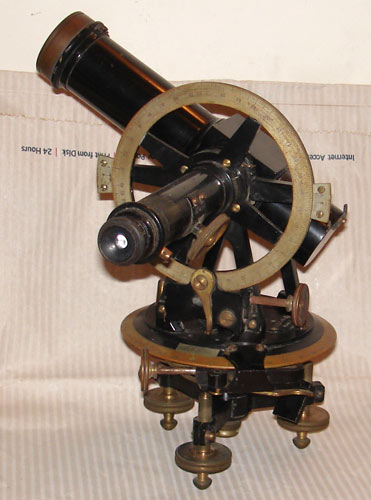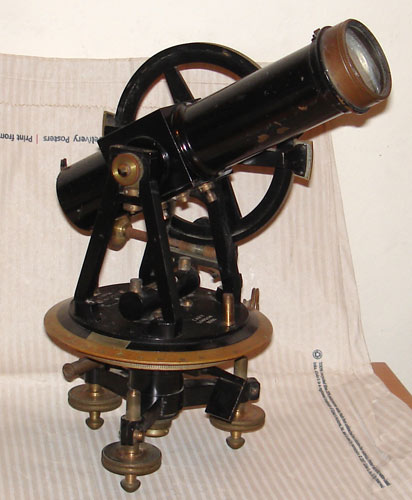 |
 |
The Cary Porter Model D, and the Watts Mark B theodolite were in common use by the Metrological Office of the United Kingdom prior to the Introduction of the Met. Office Pattern Theodolite in 1937, The Cary is an open frame type with a positively engaging worm screws and 10 verniers. The Cary theodolite is mentioned in Met Office citations as early as 1916 and the theodolites use may well predate this. The instrument above's Met Met office stamp lacks an initial service date stamp only showing an overhaul in 1941. The Cary Model D is a first generation pilot balloon theodolite differing very little from the c. 1905 A. de Quervain design.
The Cary Model D lacks later refinements such as micrometer drums, a finder scope, lighting and a tribrach base. These innovations were incorporated in the 1937 Met Office pattern theodolite that made this model "redundant."
The Cary Model D has a vernier on the front and rear side of the Azimuth Circle, but unlike German open circle instruments (and the later Met Office Pattern Instruments) the elevation cannot be read from the back. The Cary does incorporate a replaceable gradicule that can be replaced without disturbing the alignment of the instrument. Presumably different gradicules were available which were field replaceable.
